Interview: Simon Chuck, Creative Lead at NewTerritory
In the dynamic world of design and innovation, Simon Chuck, the Creative Lead at New Territory, emerges as a leader in innovative design thinking. In this article, we are privileged to share our recent conversation with Simon, shedding light on his “planet-first” design philosophy. Furthermore, we delve into the innovative approach of NewTerritory, the Clerkenwell based independent creative studio, as they employ their ‘Map, Make, and Move’ methodology to sew a seamless thread between physical and digital spaces.

Simon Chuck, Creative Lead at NewTerritory
1. Our readers are always interested to know about the people behind the studio, please could you begin by introducing yourself and telling us about your background and your current role at NewTerritory?
My name is Simon Chuck and I am the Creative Lead at NewTerritory. I enjoyed being creative from a young age, but I often got told off for daydreaming out of the window and drawing too much. I turned this passion for creativity into a career, which led me to Kingston University, where I explored a number of forms of design before eventually specialising in Industrial Design at Northumbria University.
Since then, I have been lucky to work in both the Netherlands and London for some of the world’s most interesting product and brand agencies, including The GRO Agency, forpeople and NewTerritory working with clients NIO, British Airways, The Body Shop, Kettler, IHG, Burger King, Panasonic, and Ford, to name just a few. However, it was my love for hiking, climbing, and my deep desire to spend more time in nature that has led me in recent years to shift my focus and purpose towards a more planet-first design thinking approach. I am now dedicated to championing circular design thinking and climate-focused ambitions, aiming to make a positive impact on our environment and create a sustainable future.
2. Through a deeply collaborative, multi-disciplinary and diverse cross-sector approach NewTerritory strives to create greater impact for people, planet and profit. Could you introduce the studio, your team and tell me about the background of the studio?
NewTerritory is a creative studio based in Clerkenwell in London. Founder, Luke Miles, formed the studio out of an interest to use creativity to not only produce memorable products, services and experiences for external customers, but to also help positively shift internal culture within brands.
Our mission is to ‘Transform Relationships by Design’. We believe a well designed experience has the power to improve and transform our relationship with the world around us — when people experience real improvement, it can create a positive ripple effect that sets our expectations for other moments in our lives.
We’re a group of designers, strategists, creative technologists, client partnerships and studio support, working across brand vision, experience design and communication. We work with the likes of Delta Air Lines, Coca-Cola, DIRTEA and Universal Hydrogen, to create more meaningful relationships with our bodies, the journeys we take and the places we inhabit.

The NewTerritory Process
3. You break your creative process down into three stages, Map, Make and Move, can you walk me through this in more detail?
Our Map, Make and Move process is at the heart of every project we do.
Each project starts with the Map stage which sets the strategy for the project. We trace the user or customer journey, create a vision and map each moment with a focus on small details. This empathic design approach allows us to craft meaningful moments and brand experiences.
The Make phase turns the vision into reality, whether that’s through a new North Star principle, spatial design or a billboard campaign. We often use the term ‘inside out’ which essentially means working closely with our clients internal teams as we see cultural change within the organisations we work with as a key criteria of success.
Lastly, Move addresses the impact which our projects have. We’re on a mission to balance the triple bottom line of people, planet and profit — we’re continually trying to measure our success on how well these three elements come together in our work. From looking at someone’s wellbeing through what they consume through to the reduction of carbon within the aviation industry — we want to create value in the legacy we leave behind.
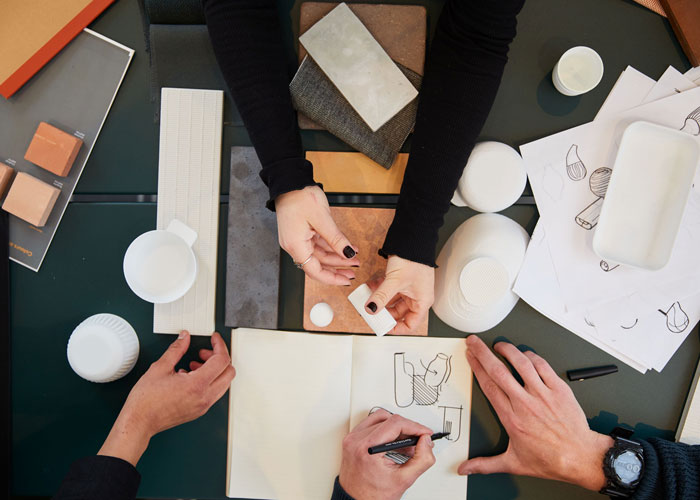
The NewTerritory Process
4. I would like our conversation today to hinge around your statement that ‘future worlds of product, service and experience will define a new era in digital interaction, shaping a universally better experience for all.’ Could you begin by outlining what you mean by the ‘future worlds of product, service and experience’ and continue by explaining your interpretation of digital interaction?
When we speak about future worlds through product, service and experience, we speak of creating a singular thread of seamless interaction between spaces, both physical and digital. Interiors can no longer just be physical, they’re spaces that transcend both physical and digital.
How do we create interiors, spaces and interactions that exist in the digital sphere as well? The tether between that physical and digital world is the UI (user interface), the UX (user experience), and the interactions that enable that fluidity and transfer between two spaces.
We must adopt a broader perspective when examining digital interactions. It is no longer limited to a mere act of clicking a button on your phone or swiping within an app. When we discuss technology, we often describe it as ethereal—an intangible entity. I believe this is a compelling way to articulate our vision of what technology should represent. It should seamlessly transcend mere output; your screen should serve as a portal to a more expansive realm. A successful digital interaction should weave the entire experience together, forming what we like to call a ‘digital thread.’
Our project, Empathic Technology, delves into various avenues for smart technology within the home. These approaches endeavour to transition us from a functionally smart environment to one that is emotionally intelligent. To achieve this, we’ve re-conceptualised a range of interconnected home devices, categorising them into three distinct groups. These categories serve as a continuum, stretching from the near future to the distant, and evolving from mere products to integral fixtures and even architectural elements. Through this reimagining, we aim to uncover innovative means of fostering connectivity, introducing novel ways to perceive our needs, and ultimately exploring avenues to positively enhance both our personal well-being and the overall quality of our living spaces.
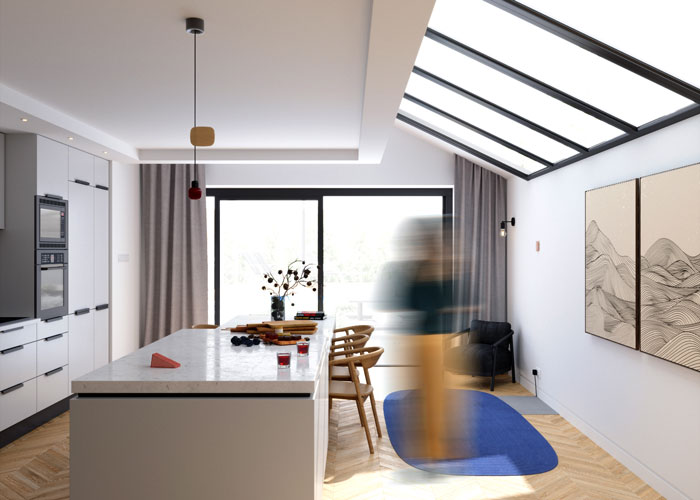
NewTerritory— Empathic Technology
5. Could you talk me through your statement and explain how it will improve society’s experiences?
When envisioning future society, there is an absolute need to design responsibility and sustainability both physically and digitally, whether it’s a product, service or experience.
One area deserving our attention is the cultivation of a sense of guardianship among consumers regarding their interactions with various elements. Our primary goal is to reshape consumer perspectives and mindset on the process of product or space construction, fostering an emotive connection with the materials involved, while also providing education about the complete life cycle of the service or product. This encompasses their sourcing, disposal, and subsequent transition into their next life.
To establish spaces that convey the notion of responsibility, it is imperative to elevate the narrative of circularity, ensuring it takes centre stage to cultivate heightened awareness and advocacy. Ultimately helping to shift cultural values to become more planet positive. We’ve designed ways to encourage customers to be more responsible, offering ways of leasing or carrying out end of life recycling for old footwear.
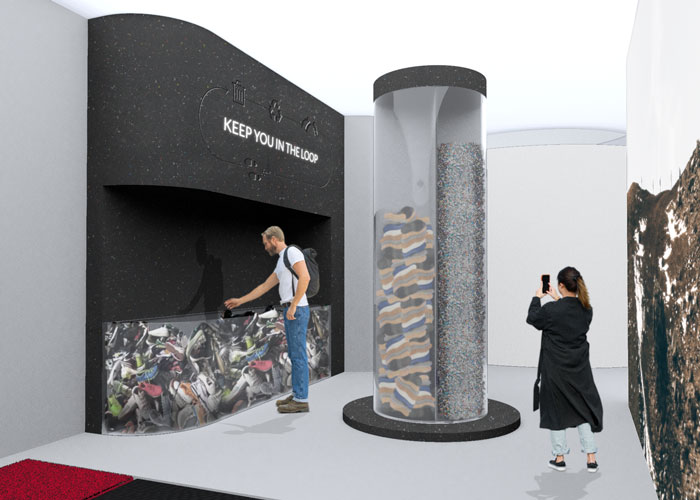
NewTerritory— Sportswear Retail
6. I know that you have written extensively about AI, asking questions including is AI a threat or an ally to the design industry? And you’ve delved into AIs role in healthcare, safety and farming. In what ways is AI part of digital interaction and what role does it play in shaping improved experiences?
AI has advanced how companies are able to carry out R&D and has evolved how brands engage with customers and foster brand loyalty. Awareness and exploration of AI has expanded rapidly over the past year and it’s extremely important that it is monitored and regulated as it continues to grow.
AI has the potential to significantly enhance digital experiences across diverse sectors, ranging from healthcare and metaverse privacy to urban planning and agriculture. In healthcare, it can support diagnosis and treatment, ultimately improving patient care and health outcomes. Within the metaverse, AI strengthens cybersecurity measures, fostering a safer and more secure environment for users. In urban planning, AI-driven innovations enable the creation of sustainable and user-friendly cities, enhancing living experiences and addressing environmental concerns. In agriculture, AI promotes efficient and sustainable farming practices, ensuring food security and minimising environmental impact. Overall, its role is to enhance and optimise these interactions, ultimately leading to improved experiences and outcomes in these domains.
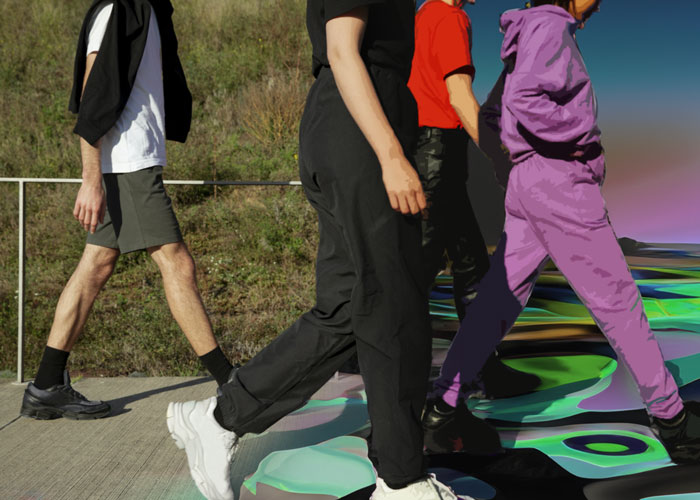
Future of Brand Experience (image assisted with AI)
7. Am I right that one of the areas you have been considering in your work is the impact of digital interaction on the future of retail experiences?
Yes, that’s right. The emergence of digital interaction has significantly shaped the future of retail, leading to an interesting transformation in how consumers engage with products and brands. We’re excited by the concept of the future of retail becoming more immersive, engaging the senses in unexpected ways. We foresee the future prioritising these sensory moments alongside community engagement, wellbeing and sustainability practices.
The blending of physical and digital worlds will allow direct customer interaction and co-creation with products and brands. Brands are using co-creation to engage customers in the innovation process, enabling them to design personalised products that match their preferences. This strategy also tackles concerns related to overproduction and waste by fostering stronger emotional connections between customers and their customised items. Nike’s web3 .SWOOSH platform invites members to collectively shape the brand’s future, blurring the lines between digital and physical realms while fostering a dynamic space for inspiration and idea exchange.
Our concept Sensorial Technology harnesses the power of technology to read the physiological responses of the user and their surroundings and manipulate the environment they are in according to the different senses. Connected devices can alter and affect an environment, reacting to how someone feels. Allowing a space to celebrate or mitigate the individual user’s emotion means we can design environments that can be multi-modal. By adapting lighting, sound, scent, texture, temperature, humidity and airflow we can help navigate people towards an optimal wellbeing state.

NewTerritory— Sensorial Technology
8. As designers how must we utilise the digital opportunities available to us? What questions must we ask? What must we push for? What barriers do we still face? What are our greatest opportunities? What is NewTerritory’s role in this?
As designers, our ability to thrive in today’s ever-evolving landscape hinges on our capacity to harness the digital opportunities at our disposal. This entails posing pertinent questions, advocating for essential changes, acknowledging prevalent barriers, and recognising our most promising avenues for advancement. In this endeavour, NewTerritory assumes a pivotal role, acting as both a trailblazer and a advocate for change, while also functioning as a facilitator, collaborator, and strategic partner in catalysing this transformative journey.
In the realm of digital opportunities, Augmented Reality (AR) and Virtual Reality (VR) emerge as powerful tools that designers can wield for experimentation. These technologies offer the capacity to swiftly prototype and test retail spaces, thereby enhancing and expediting the design process.
Nevertheless, as we tread into the digital landscape, we find ourselves confronted with ethical questions that demand careful consideration. These ethical quandaries pertain to the utilisation of personal data and privacy as drivers for environmental changes in physical spaces. It is incumbent upon designers to navigate these murky waters responsibly, ensuring proper consent and data usage.
To propel our collective mission forward, there are several key imperatives that we must champion. Foremost among these is to foster collaboration. By promoting collaborative efforts among designers, technologists, and an array of other stakeholders, we sow the seeds of innovation and pave the way for a holistic approach to design.
Another important issue is to advocate for inclusive design. Such design practices should be all-encompassing, taking into account the diverse needs of individuals of varying abilities and demographics. This approach fosters the creation of spaces and experiences that are accessible and welcoming to all.
Advocating for sustainability extends beyond design aesthetics; it must permeate manufacturing and retail operations. By pushing for sustainable practices throughout the entire lifecycle of products and spaces, we contribute to the mitigation of the environmental impact of our work and thereby uphold our responsibility to the planet.
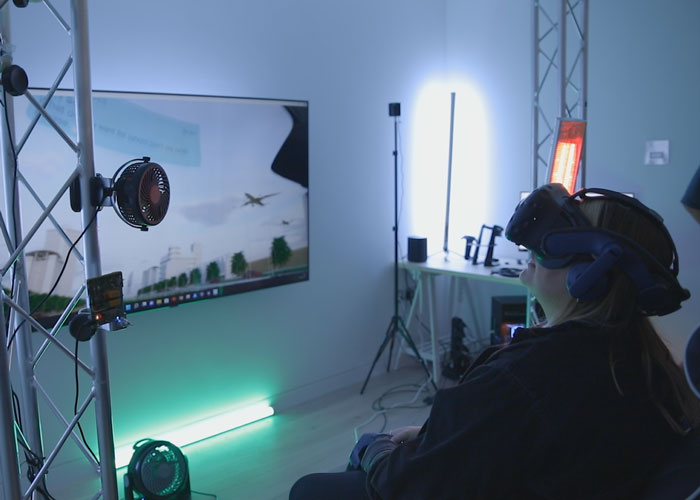
NewTerritory— IXD 3.0
In our journey to reshape the design landscape, we must also cultivate a profound sense of responsibility among designers and companies. This entails a holistic consideration of the broader societal impact of our designs. Our work should transcend mere aesthetics and functionality, aiming to drive positive change in the world.
However, we are not without our fair share of challenges. The retail industry, despite a growing appetite for change, often exhibits resistance to the swift implementation of digital innovations. This resistance can impede our progress and necessitates a nuanced approach.
Additionally, certain demographic groups may face barriers stemming from a deficiency in digital literacy skills. This digital divide threatens to exclude these individuals from the benefits of the digital revolution, underscoring the importance of addressing digital equity as we forge ahead.
Amid these challenges, our greatest opportunities beckon. By leveraging digital technologies, we have the capacity to elevate the customer experience, making it more engaging and personalised than ever before. The unbound realm of digital has led us to create a new way of thinking around the physical, leading us to new archetypes of experience and engagement unlike anything that has come before.




